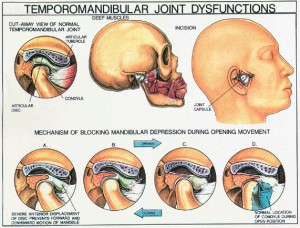Back to Blog

Treatment of Orofacial Pain: TMD and Facial Neuraligias
Waking up in the morning with headaches? Painful popping in the jaw with chewing and yawning? Sharp, severe, lancinating pain in the head, face, ear, or jaw? You may be suffering from a type of orofacial pain!
Often the structure involved is the temporomandibular joint (TMJ) and the muscles surrounding this area. Pain may be due to a hypo- or hypermobile TMJ (too little or too much movement, respectively), derangement of the TMJ disc, or tightness of the muscles of mastication.
Your physiotherapist will take a detailed history of your current complaints, as well as a meticulous musculoskeletal assessment of your jaw and neck. We will be looking for asymmetry of facial structures, as well as movement deviations of the jaw through its available range of motion.

Another examination your physiotherapist will do will be checking the teeth for signs of bruxism (teeth clenching or grinding) as well as the insides of the cheek for damage. This may be evoked during sleep in the night or by stress during the day. Clients that have TMJ pain and are ‘grinders’ may benefit from having a night guard to help maintain the jaw in a slight rest position, and refrain from wearing their teeth down.
On many occasions, temporary and relative rest of the jaw are required to improve healing. This may be as simple as temporarily eating softer foods, or cutting up the food into smaller pieces. Usually gum and pen chewing must cease and desist immediately.
Physiotherapy treatment of TMJ dysfunction (TMD) may joint mobilizations, stretching, myofascial release, acupuncture, and strengthening exercises. In a recent study conducted in Sweden (reviewing of systematic reviews and meta-analyses) found that there is evidence that night guards, acupuncture, exercises and postural retraining can be effective in alleviating TMD pain. Interestingly they found that electophysical agents (including ultrasound and laser) as well as surgery were ineffective, although could not be conclusive because of methodology variation between studies.
I would like to enforce that by no means is your physiotherapist the only professional to help you through your care of TMD. We will be working hand-in-hand with your dentist and possibly other health professionals such as your family physician, a neurologist, or an orofacial surgeon. Without treating the whole picture, we risk poor recovery.
List, T. & Axelsson, S. (2010). Management of TMD: evidence from systematic reviews and meta-analyses. Journal of Oral Rehabilitation. May 37, 430-451.

